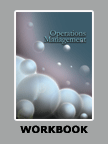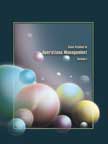Quality and Safety Practices at LEGO




|
|
ICMR HOME | Case Studies Collection
Case Details:
Case Code : OPER062
Case Length : 13 Pages
Period : 1916-2007
Organization : LEGO Group
Pub Date : 2007
Teaching Note :Not Available
Countries : Global
Industry : Toys
To download Quality and Safety Practices at LEGO case study
(Case Code: OPER062) click on the button below, and select the case from the list of available cases:

Price:
For delivery in electronic format: Rs. 200;
For delivery through courier (within India): Rs. 200 + Rs. 25 for Shipping & Handling Charges
» Operations Case Studies
» Operations Short Case Studies
» View Detailed Pricing Info
» How To Order This Case
» Business Case Studies
» Case Studies by Area
» Case Studies by Industry
» Case Studies by Company
Please note:
This case study was compiled from published sources, and is intended to be used as a basis for class discussion. It is not intended to illustrate either effective or ineffective handling of a management situation. Nor is it a primary information source.
|
|
<< Previous
Safety First Contd...
|
LEGO laid special emphasis on quality and safety, as its main customers were
children. The company took care to see that the toys were able to not only
endure extreme wear and tear, but also did not harm the children in any way.
Special care was taken during the production process to see that there were no
loose parts or harmful elements that could pose a potential hazard to children.
Even after the toys went into the market, LEGO monitored them regularly and was
proactive in seeking feedback on their performance. LEGO did not often have
major product recalls, and the Explore Super Truck recall was one of the few
instances where a LEGO product had been found to be unsafe in the more than 50
years of the company's existence.
|
|
The immediate recall of the potentially hazardous product was widely perceived
to be a demonstration of LEGO's commitment to quality and safety.
Background
LEGO's origins can be traced back to 1916, when Ole Kirk Christiansen
(Christiansen), a carpenter, purchased a woodworking shop in the Billund
region of Denmark.
|
|
Christiansen earned his living by building houses and
furniture for the farmers in Billund. In the late 1920s, he started
producing miniature versions of his products (like ladders and tables) as
design aids.
These proved to be popular with customers, and eventually
inspired him to venture into the wooden toys business. However, the toys
business slowed down because of the economic depression in the 1930s when
people could not afford to spend money on non-essentials, and Christiansen
found that he had to continue producing furniture in addition to toys to
stay afloat. |
In 1934, Christiansen coined the name 'LEGO' from the Danish
words Leg Godt, which meant 'play well'. Around the same time, his son Godfred
Christiansen also joined the business and started playing an active role in
creating designs for new toys.
When plastics started gaining popularity in the 1940s, the Christiansens decided
to diversify into plastic toys. They bought a plastic molding machine, becoming
one of the first to do so in Denmark, and began producing toys made of a plastic
material called cellulose acetate...
Excerpts >>
|
|



